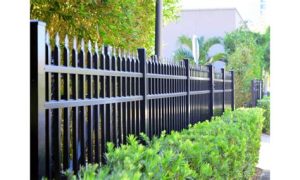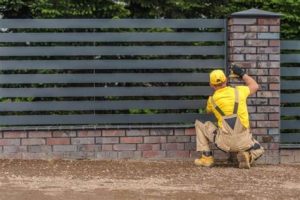Installing a T post wire fence can be a daunting task, but with the right guidance and tools, it can also be a rewarding DIY project. Whether for livestock management, garden protection, or enhancing your property’s boundaries, understanding the best practices is essential for a successful installation. In this comprehensive guide, we will walk you through the essential tools needed, how to prepare your area, and the step-by-step process for properly setting up T posts. We’ll also share tips on ensuring the wire is tightly secured and highlight common pitfalls to avoid. With our expert advice, you’ll be well-equipped to create a sturdy and effective fence that meets your needs. Let’s dive into the best tips for installing a T post wire fence!
What Are The Essential Tools For Installing A T Post Wire Fence?
When embarking on the project of installing a T post wire fence, having the right tools is crucial to ensure a smooth and efficient process. Below is a list of essential tools you will need:
- T Posts: These are the vertical supports that will hold the wire in place.
- Fence Wire: Choose the appropriate gauge and type based on your fencing needs.
- Fence Post Driver: This tool helps drive the T posts into the ground securely.
- Wire Cutters: Essential for cutting the wire to the desired lengths.
- Stretching Tool: A wire stretcher will help tighten the fence wire appropriately.
- Gloves: Protect your hands from cuts and scrapes while handling wire and posts.
- Measuring Tape: Ensure accurate spacing and alignment of your posts.
- Level: A level will help you ensure that the posts are vertical.
- Safety Glasses: Protect your eyes while working with tools and materials.
Gathering these tools beforehand will make your T post wire fence installation project more effective and enjoyable. Remember, having the right gear is a significant component of achieving quality results.
How To Prepare The Area For A Successful Installation?
Preparing the area correctly is crucial for the longevity and effectiveness of your T post wire fence. Below are detailed steps to ensure your site is ready for installation:
- Clear the Area: Remove any debris, rocks, or vegetation where the fence will be installed. This will facilitate easier digging of post holes and provide a smoother installation process.
- Mark the Fence Line: Use stakes and a string line or marking paint to outline the desired fence line. This will help you visualize your fence placement and ensure it is straight.
- Check Local Regulations: Before digging, check for any underground facilities or local restrictions on where fences can be installed. Contacting your local utility companies can prevent accidental damage to lines or pipes.
- Assess Soil Conditions: The type of soil can affect the installation of T posts. In rocky or compacted soil, you may need a post hole digger with extra power or tools such as a digging bar.
- Determine Fence Spacing: Plan how far apart the T posts will be placed, generally 10-12 feet apart. Mark these locations with additional stakes to guide your installation.
By following these preparatory steps, you can significantly increase the chances of a successful installation, ensuring that your T post wire fence remains sturdy and effective for years to come.
What Are The Steps To Properly Install T Posts?
Installing T posts correctly is crucial for ensuring the stability and effectiveness of your wire fence. Here are the steps to achieve a proper installation:
- Mark the Fence Line: Use stakes and string to clearly define the fence line. This will help you maintain a straight path for your T posts.
- Determine Post Spacing: Typically, T posts should be spaced about 8 to 10 feet apart. Use a measuring tape to measure and mark the spots where you will install the posts.
- Dig Holes: Use a post hole digger or an auger to create holes for your T posts. Each hole should be around 24 inches deep to ensure sufficient stability.
- Set the Posts: Place the T posts in the dug holes, ensuring they are vertical and properly aligned with the stakes marking your fence line.
- Backfill the Holes: Fill the holes with soil, gravel, or concrete for more stability. If using concrete, allow it to cure for the recommended time for maximum strength.
- Check Alignment: As you backfill, periodically check the vertical alignment of each post with a level to ensure they remain straight.
By following these steps, you can effectively install T posts that will serve as a sturdy base for your wire fence.
How To Ensure The Wire Is Tightly Secured On The Fence?
To ensure the wire is tightly secured on the fence, follow these steps:
- Choose the Right Wire: The type of wire you select will significantly impact how well it can be tightened. Barbed wire, high-tensile wire, and welded wire are popular options that can provide strength when properly installed.
- Use a Wire Tensioner: A wire tensioner is a crucial tool that helps to keep the wire taut. This device allows you to apply even pressure while securing the wire to the T posts, which helps in achieving the desired tension without damaging the wire itself.
- Attach the Wire Securely: When attaching the wire to the T posts, ensure that the wire clips or ties are firm. Use at least two clips per post to secure the wire firmly in place.
- Check for Proper Tension: After you’ve secured the wire to the posts, walk along the length of the fence line to check for any sagging sections. If you notice any loose areas, adjust the tension accordingly using the wire tensioner.
- Inspect Regularly: Once installed, it’s essential to regularly inspect the wire fencing to ensure that it remains tight and secure. Weather conditions, animal interactions, and natural settling can contribute to looser wires over time.
By following these tips, you can effectively ensure that the wire on your T post fence remains tightly secured, which will help maintain the integrity and functionality of the fence over time.
What Are Common Mistakes To Avoid When Installing T Post Wire Fences?
When it comes to installing a T post wire fence, avoiding common pitfalls can save you time, money, and frustration. Here are several mistakes to steer clear of:
- Inadequate Planning: Not taking the time to plan your fence layout can lead to numerous problems. Measure your area carefully and select the appropriate spacing between posts. A well-thought-out plan is essential.
- Ignoring Soil Conditions: Failing to assess soil type can result in unstable posts. Hard, rocky soil or loose, sandy soil requires different approaches when it comes to installing T posts.
- Not Using Proper Tools: Using inappropriate tools can compromise the installation process. Ensure you have all the essential tools for a secure installation before starting the project.
- Inconsistent Post Depth: Posts that are not installed at the same depth can lead to instability. Aim for a consistent depth, typically at least one-third of the post’s length buried in the ground.
- Failing to Secure Wire Properly: If the wire isn’t tightly secured, it can sag over time, leading to an ineffective fence. Ensure that the wire is taut and check its tension regularly.
- Neglecting Vertical Alignment: T posts that are not vertical can affect the overall aesthetics and effectiveness of the fence. Use a level tool to keep posts straight during installation.
- Skipping Maintenance: Once the fence is installed, neglecting regular maintenance can cause issues. Keep an eye on wire tension and post stability to ensure longevity.
By being aware of these common mistakes and making a conscious effort to avoid them, you can achieve a sturdy and efficient T post wire fence that meets your needs.
Frequently Asked Questions
What materials do I need to install a T post wire fence?
To install a T post wire fence, you’ll need T posts, wire fencing, wire cutters, a post driver or sledgehammer, fencing staples, and optionally, a level for positioning.
How deep should T posts be driven into the ground?
T posts should typically be driven at least 1/3 of their total length into the ground for stability, with a minimum of 2 feet recommended for standard 6 to 8-foot posts.
What is the proper spacing for T posts when installing a wire fence?
T posts should generally be spaced between 8 to 12 feet apart, depending on the type of fencing and the type of animals you want to contain.
How do I secure the wire to the T posts?
You can secure the wire to the T posts using fencing staples or wire clips, ensuring the wire is taut and properly tensioned for durability.
Can I install a T post wire fence on uneven terrain?
Yes, you can install a T post wire fence on uneven terrain. Use longer posts in lower areas and shorter ones on higher areas to maintain a consistent fence height.
What are the advantages of using T posts for fencing?
T posts are lightweight, easy to install, durable, and designed to withstand various weather conditions, making them a popular choice for many fencing projects.
How can I maintain my T post wire fence after installation?
Regularly check for loose wire, inspect for rust or damage on T posts, and tighten any sagging wire. It’s also a good idea to remove weeds or debris around the fence line.





